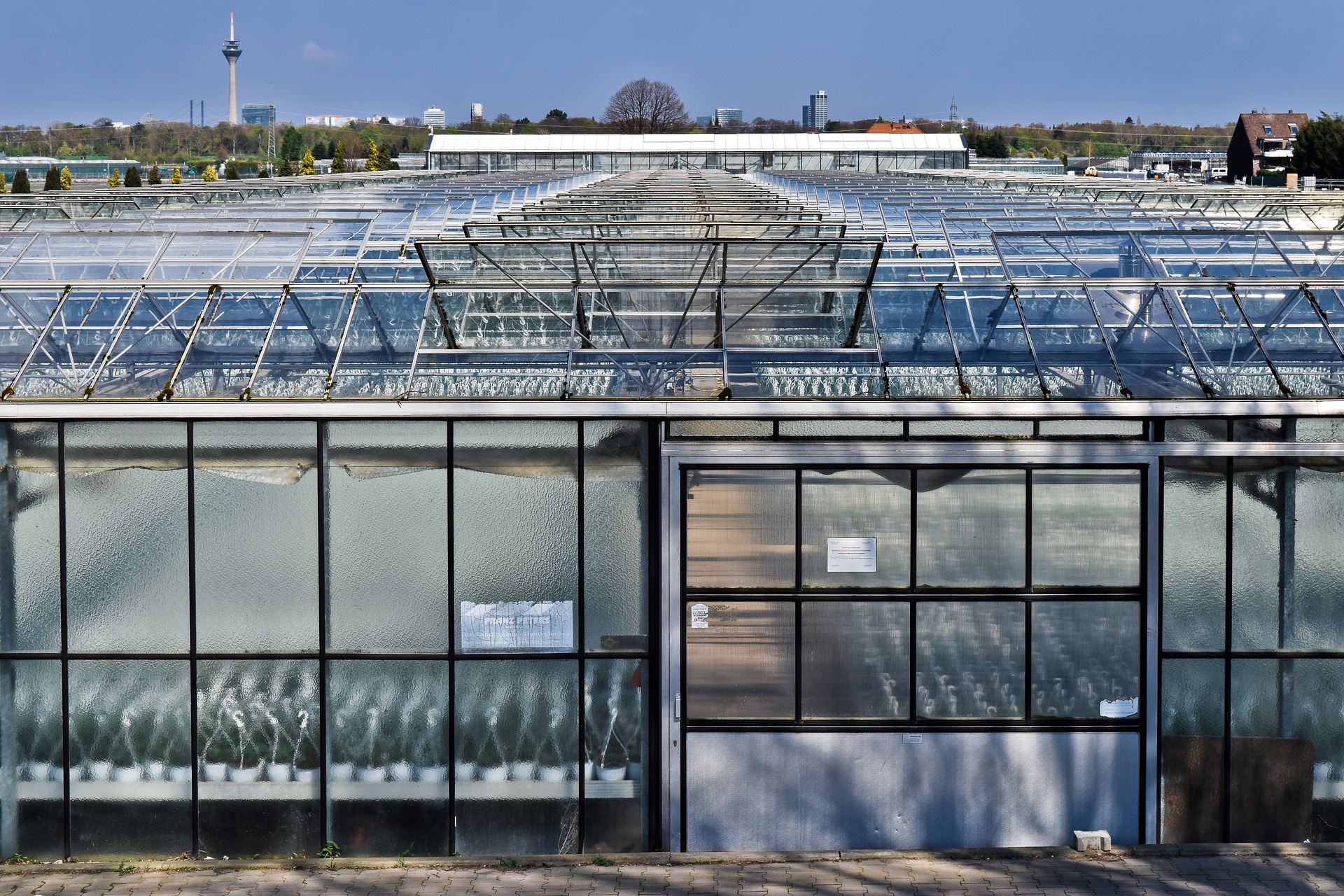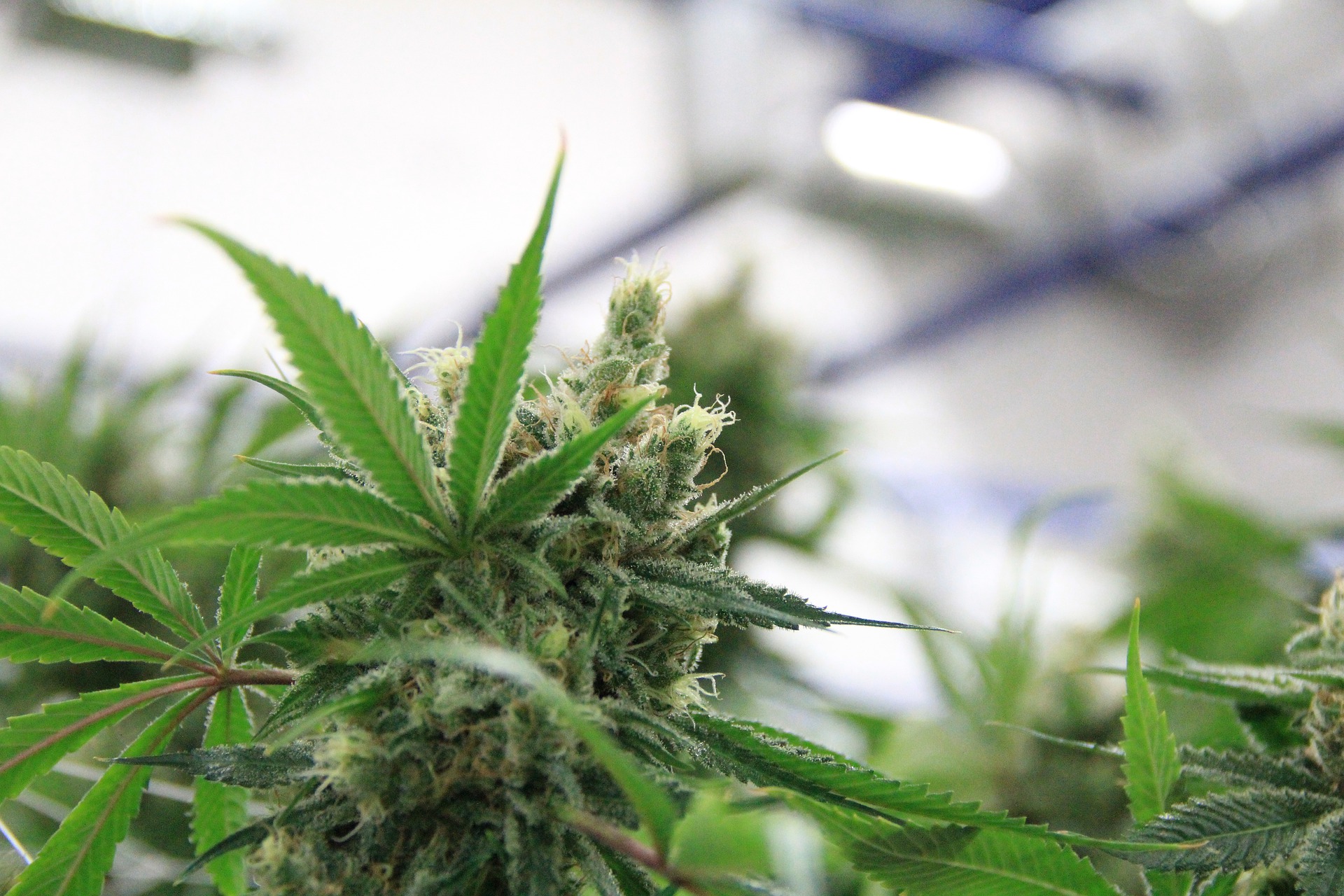Wondering how cannabis greenhouses benefit from cultivation software?
Advantages of Cannabis Greenhouses
Greenhouses offer many advantages to cannabis growers. They allow for more environmental control than an outdoor grow, can grow crops year round, and can be run more efficiently than setting up a commercial grow room. Greenhouses are a major part of our clients' Cannabis SOPs (cannabis standard operating procedures) due to the fact that they are also great to ensure cannabis crops do not get contaminated from male outdoor plant pollen. They can also be used by breeders who wish to produce seed but need to contain pollen.
Cannabis greenhouses greatly benefit from the use of cultivation software and ERP systems like GrowerIQ. Having a "control station" is ideal in a cannabis greenhouse because there are so many factors that require monitoring. Cultivation software like GrowerIQ makes it easy to control ventilation, irrigation, and other connected systems.

Meticulous monitoring and control of temperatures will help cannabis plants thrive. Automating temperature control and using cultivation software also helps financially to optimize energy use and reduce labour costs.
Greenhouse Environmental Factors
Greenhouse Temperature
Greenhouses get their name from "the greenhouse effect." The greenhouse effect takes place when trapped solar radiation causes temperatures to increase within that enclosed environment.
Greenhouses are engineered to optimize the greenhouse effect, but in some locations temperatures can fluctuate to levels outside acceptable bounds for plants. Engineering solutions, like using the right kind of glazing and ventilation placement, help prevent overheating, but often monitoring and controlling temperatures must be handled manually. This is why cultivation software and automatic controls should be planned out in advance to ensure systems integration.
Meticulous monitoring and control of temperatures will help cannabis plants thrive. Automating temperature control and using cultivation software also helps financially to optimize energy use and reduce labour costs.
Greenhouse Humidity
Humidity is another environmental factor that can cause problems in a cannabis greenhouse. Like heat, humidity can exceed optimal levels for plant growth.
Plants are a major source of humidity in greenhouses. At night plants release gas through pores where some water also escapes. Moisture can also come from soil and irrigation, making it important to minimize over-watering and puddles.
Humidity forms when air cools to the dew point temperature and becomes saturated with water. Condensation forms when humid air cools further. Excess humidity is not good for plants, but moreso it encourages moisture loving pests and pathogens.
Using automated environmental controls and cultivation software can detect when humidity exceeds safe levels for plants and allow growers to quickly respond to the situation.
Air Circulation
Carbon dioxide (CO2) is consumed by plants through photosynthesis. In photosynthesis, the carbon from CO2 is used to create sugars and starches stored by the plant. The oxygen from CO2 is a waste product that must be released at night when pores open in the plant’s leaves.
CO2 becomes depleted in the air directly around a plant's leaves. Proper greenhouse ventilation ensures that the depleted air around the plant will be replenished. The overall photosynthesis rate of the plant will decline if CO2 is not replenished. This results in stunted growth.
Carbon dioxide enrichment systems for cannabis greenhouses can also help replenish and enrich CO2 levels. Most thermostats are not equipped to monitor CO2 levels. Special sensors are generally needed. Greenhouse management systems can help monitor CO2 consumption and detect when plant consumption peaks. This technology encourages plant growth and also helps prevent resource waste.
The force of airflow, or air circulation, can create breezes that influence plant growth. When plants grow in a windy location they divert resources towards producing strong and fibrous stems. This diversion of plant energy isn't desirable for growers cultivating cannabis flower, so it is important that air circulation is forceful enough to mix air, but gentle enough that it doesn't blow too hard over plants.
Good control of air circulation helps create an optimal grow environment. When air circulates properly, uniform temperature, humidity, and CO2 levels are maintained throughout the space. Having electronic control of the grow environment through cannabis cultivation software is much more accurate and efficient than manually adjusting shutters, vents, and fans.
Greenhouse Management Systems
Greenhouse management systems innovate by leveraging technology. These systems begin with connected components like shutters, vents, and fans that are connected to controller boxes that can be further linked to cultivation software.
Sensors like thermostats, moisture and pH monitors, and hygrometers can also be connected to cultivation software. When these sensors detect environmental conditions that are outside the set limits, the software can alert greenhouse personnel. Some software can even be programmed to respond automatically.

Cannabis cultivation software can help manage different growth stages and keep flowering times aligned with a production schedule.
Cannabis Greenhouse Lighting
Lighting is a major consideration when setting up a commercial grow room for cannabis. This is because cannabis is a short day plant that synchronizes its growth stages to the seasons. "Photoperiod" is the length of time during which plants receive sunlight and conduct photosynthesis.
Short day plants like cannabis respond to shortened photoperiod by triggering flower production and maturation. Growers can take advantage of a plant’s response to photoperiod to shorten cropping time and help schedule cropping in greenhouses. Cannabis cultivation software like GrowerIQ can help manage the different growth stages and keep flowering times aligned with a production schedule.
Cannabis crops will flip to flower production when day length is less than 11 hours and night length is at least 12 hours. When cultivating cannabis in a greenhouse, these conditions don't always naturally align with a production schedule. Luckily there are methods to extend and supplement day length during winter production, and shorten day length during summer production.
Supplemental Lighting for Cannabis
Photoperiod changes naturally with the seasons:
- In the northern hemisphere, December 21 is the shortest day of the year
- Day length will increase from December 21 to June 21, the longest day of the year, decreasing thereafter
- Increased latitude will have a larger effect on seasonal day length fluctuation
- At 30° latitude (New Orleans), day length will range from 11 hours to about 14.5 house
- At 45° latitude (Minneapolis), day length will range from 9.5 hours to 16 hours.
Lighting for photoperiod control differs from supplemental lighting in greenhouses. Supplemental lighting is used to increase light exposure to maintain photosynthetic productivity on days where there is little sunlight.
Overcast days and days during the winter months do not provide enough solar radiation to maintain plant growth. Supplemental lighting must be used to provide adequate light during these times.
While photoperiod lighting can be achieved with low intensity lighting, supplemental lighting needs to be high intensity. HID or LED lights are effectively used for supplemental greenhouse lighting. To find out how much supplemental lighting is needed an online calculator can be used.
The Gas Lantern Routine
The gas lantern routine is a method for maintaining cannabis plants in their vegetative growth stage. Using the gas lantern routine can optimize energy consumption. Only 13 hours of light are used instead of 16+ hours.
How does it work?
- Lights are on for 12 hours
- Lights go off for 5.5 hours
- Lights turn on for one hour
- Then lights turn off for 5.5 hours again
This cycle repeats and maintains vegetative growth by tricking the plant into thinking it has had more time in light. The gas lantern routine and other cyclic interruption lighting methods can be used in greenhouses and commercial grow rooms to reduce energy costs. Managing lighting routines is vital for crop success. This is another area where greenhouse management systems and cultivation software can help ensure that facilities are managed well.
Greenhouse Black Out Systems for Cannabis
Light deprivation systems use black out cloth which is an opaque cloth that prevents crops from receiving light exposure. Greenhouse light deprivation systems may be applied manually, or installed on an automated curtain system. Protecting plants from light pollution is vital to crop success with short day plants like cannabis. Openings in the greenhouse around shutters, doors, and fans need to be covered to ensure crops are protected from light contamination
Light deprivation systems grant growers a high degree of control over crop cycles. Crop production can be maximized year round to allow for shorter cropping times because flowering can be induced as desired after plants have sufficient vegetative growth.
Light deprivation systems are almost essential in a cannabis greenhouse. Automated black out cloth systems require significantly less time and labour to apply than their manual counterparts.
Greenhouse management systems that embrace technology also improve crop yield and crop quality because they allow for meticulous control of the cannabis greenhouse.
Cost Effective Greenhouse Management Solutions
There are a seemingly endless number of environmental factors to monitor and control in a commercial grow room set up or cannabis greenhouse. Highly efficient greenhouse management simply cannot be achieved while relying on manual labour. The time and manpower required to monitor environmental factors, lighting systems, and irrigation systems is substantial.
Automating cannabis greenhouses and setting up cannabis cultivation software can be a complicated endeavour up front. When viewed over the long term (which is how you should plan for your successful business!), these investments in advanced greenhouse management systems are a boon to efficiency and result in significant cost savings.
Greenhouse management systems that embrace technology also improve crop yield and crop quality because they allow for meticulous control of the cannabis greenhouse. When considering how you will set up your cannabis greenhouse management system, keep in mind that cultivation software can centralize control of your facility and offer many other advantages!
- High degree of control over temperature, humidity, and carbon dioxide
- Accurate measurements of greenhouse environment
- Manage greenhouse lighting and light deprivation systems
- Keep crops on an organized production schedule
- Predictable yields and profits with more protection from crop failure
- Instant alerts when something goes wrong
- More efficient operations with fewer, more highly trained employees
Find Out More
The GrowerIQ cultivation software and ERP system can help you achieve your greenhouse management goals. Let's discuss how GrowerIQ's software and consulting services can help you set up the best greenhouse management systems to achieve your goals. Contact our team now to learn more about our cannabis cultivation management platform and other planning services, such as our cannabis greenhouse design services. Get started by clicking below, or starting a chat with us.
About GrowerIQ
GrowerIQ is changing the way producers use software - transforming a regulatory requirement into a robust platform to learn, analyze, and improve performance.
To find out more about GrowerIQ and how we can help, fill out the form to the right, start a chat, or contact us.

